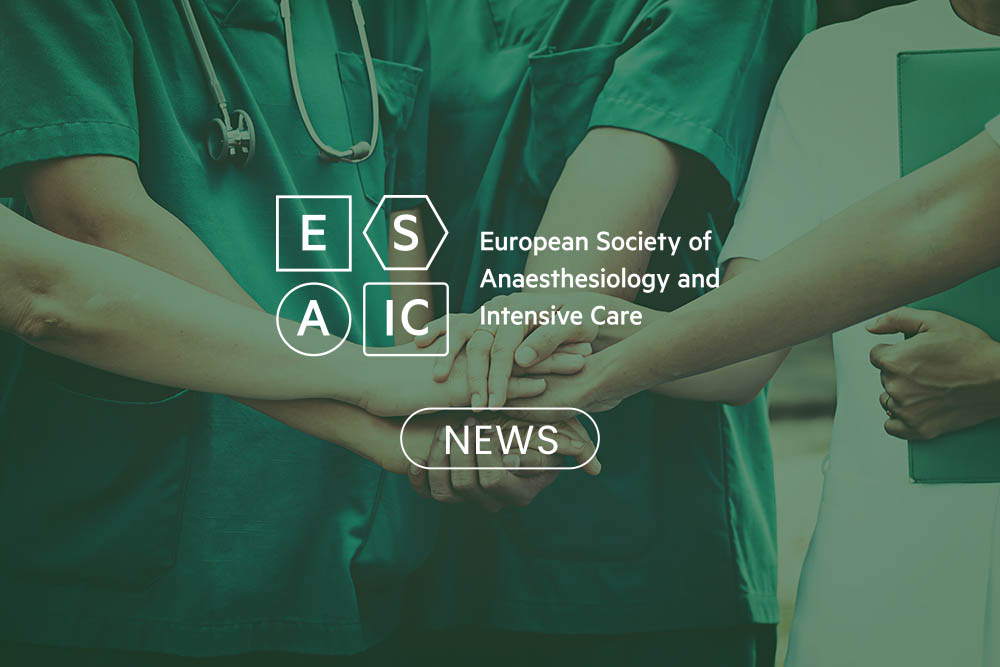Congress Newsletter 2024
Neuromonitoring reduces mortality caused by head injuries
Head injuries represent a serious public health problem with devastating consequences, including death, disability, and long-term health issues that may affect every aspect of a person’s life. Understanding the monitoring and treatment principles of head trauma are essential to reducing mortality and disability resulting from traumatic brain injury (TBI).
During a panel discussion at Euroanaesthesia 2024, Özlem Korkmaz Dilmen, MD, Professor of Anaesthesiology and Reanimation at Istanbul University, in Istanbul, Turkey, will guide colleagues through the latest guidelines addressing the management of TBI. “The main goal in the treatment of TBI is to prevent secondary brain injury by reducing intracranial pressure (ICP) and optimising cerebral perfusion pressure (CPP), as well as oxygen delivery,” Dilmen said in a pre-conference interview. “That is why neuromonitoring is essential.”

ICP and CPP monitoring have been shown to reduce in-hospital and 2-week post-injury mortality in patients with severe TBI, Dilmen noted. ICP can be monitored with the use of different types of catheters. Intraventricular catheters provide information about global ICP, whereas intra-parenchymal placement helps to gauge regional ICP levels. “In general, intraventricular catheters (IVCs) are the gold standard because they can provide cerebrospinal fluid (CSF) drainage, [thereby reducing] ICP,” Dilmen explained. “IVCs do not give just a numeric value, they also give information regarding intracranial compliance, that is why the shape of the ICP curve is very important.”
Therapeutic strategies that are tailored to individual patients’ needs have the best odds of improving neurologic outcomes and rehabilitation. However, the management of intracranial hypertension after TBI should follow a staircase approach in all cases. First-tier recommendations include general prophylactic measures such as adequate analgesia and sedation depth, maintaining CPP around 60-70 mmHg, mannitol bolus administration, and maintaining the arterial carbon dioxide pressure at the low end of normal. CSF drainage can be considered as an initial treatment for decreasing ICP. The management algorithm for severe TBI proposed by the Seattle International Severe Traumatic Brain Injury Consensus Conference1 also encourages intensive care doctors to consider electroencephalographic monitoring and anti-seizure prophylaxis for one week.
“Following the first-tier treatment, if ICP is still high, re-examine the patient and consider repeat computed tomography (CT) to re-evaluate intracranial pathology,” Dilmen said. “The [clinical team should] reconsider surgical options for potentially surgical lesions.” Second-tier recommendations include mild hypocapnia, neuromuscular paralysis in adequately sedated patients, and the assessment of cerebral autoregulation, which plays an essential role in determining the next steps. “Raise CPP with fluid boluses, vasopressors, and/or inotropes to lower ICP when autoregulation is intact,” the speaker said. “An increased CPP can lower ICP if autoregulation is intact. This is due to vasoconstriction reducing cerebral blood volume. If autoregulation is disrupted, an increased CPP may worsen ICP by increasing cerebral blood volume.”
Third-tier measures include the use of phenobarbital coma, secondary decompressive craniectomy, or mild hypothermia (35-36°C), which are recommended to control elevated ICP that is refractory to maximised standard treatment. Advanced interventions should be determined on a case-by case basis and tailored to address evolving challenges in the intensive care unit.
Those who will attend the panel discussion on Sunday may also learn more about novel approaches used to prevent cerebral hypoxia, which can occur after head trauma even in the context of normal ICP. “Monitoring brain tissue oxygen partial pressure (PbtO2) has been performed in recent years to take a closer look at the penumbra area of salvageable cells in TBI patients,” Dilmen added. “Ideally, the catheter should be inserted into non-traumatised tissue as assessed on CT scans. The normal value of PbtO2 is more than 15–20 mmHg, with sustained PbtO2 under 15 mmHg associated with cerebral ischemia and poor neurological outcomes.” The ongoing BOOST-3 trial2 may provide more answers about the effects of PbtO2-targeted treatments on neurologic outcomes.
Other sessions featured at Euroanaesthesia 2024 will explore personalised approaches to rehabilitation following TBI and the management of TBI in children.
References:
- Chesnut R, Aguilera S, Buki A, et al. A management algorithm for adult patients with both brain oxygen and intracranial pressure monitoring: the Seattle International Severe Traumatic Brain Injury Consensus Conference (SIBICC). Intensive Care Med 2020;46(5):919-929.
- Bernard F, Barsan W, Diaz-Arrastia R, et al. Brain Oxygen Optimization in Severe Traumatic Brain Injury (BOOST-3): a multicentre, randomised, blinded-endpoint, comparative effectiveness study of brain tissue oxygen and intracranial pressure monitoring versus intracranial pressure alone. BMJ Open 2022;12(3):e060188.










